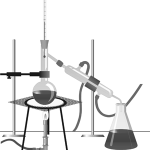 This is going to be my first post back under my new format, and for the long time followers you'll notice that I did my best to pull in all of my old posts. Some of you may be asking, why did I do this. Here's my best shot at an explanation:
This is going to be my first post back under my new format, and for the long time followers you'll notice that I did my best to pull in all of my old posts. Some of you may be asking, why did I do this. Here's my best shot at an explanation:
- I don't exactly like the lack of flexibility on Facebook to format posts as I see fit. As I wanted to get more advanced (including inline images or videos), it just didn't work, and real recourse was to post links, but it didn't quite tell the story. Hopefully this will work out a bit better.
- I've had a lot of folks tell me they are leaving FB, but would still ask me what the post of the week was. Doing it this way should allow for people to be able to get updates (via RSS feed or whatever) without being tied to that specific medium.
- I have a much better mechanism to appropriately credit the source of the information.
- I have tags now... So you can quickly and easily search for old posts, topics, and DIY experiments
- And lastly, one of my biggest Internet gripes are web pages that never update (or last updated 4 years ago). Now, while I fully suspect that this page may one day fall into that category (although I certainly hope not), I at least have the motivation now to keep the page regularly updated. And when the day finally comes that I no longer have that energy or motivation: here today, gone tomorrow, hope you enjoyed it while it lasted.
Now, with all that being said, this doesn't mean I'm not experiencing a bit of growing pains getting the concept from my head to the digital format. So some posts may take a bit longer to come out, but I do plan for future posts to be in the same form as before. I also don't have comments turned on, primarily because I don't want to be a moderator on an anonymous site.
And with that said, I leave you to check out this video of plants being dipped in various acid and basic solutions. Some pretty cool effects.
For more information, please visit:
http://beautifulchemistry.net/
The molecules inside some plants giving them vibrant colors can change to other colors under acid and base conditions. What we show here is color change of purple cabbage and a flower named Teornia fournieri in sodium hydroxide (NaOH) and hydrochloric acid (HCl) solutions.
References:
Video & EditingYan Liang (http://L2Molecule.com)
Chemical Reaction Design
Xiangang Tao, Wei Huang, & Yan Liang
Chemical reactions were shot at the Chemistry Experiment Teaching Center of USTC
Music
Royalty-free audio clips from Maxon Cinema 4D Assets
© 2014 Institute of Advanced Technology, University of Science and Technology of China
© 2014 Tsinghua University Press